The question behind Dare to Question: Carrie Chapman Carr’s Voice for the Vote seems so simple in hindsight. However, in the late 1800s, the fact that women weren’t able to vote was a given, a fact of life whose era was coming to an end thanks to suffrage. Dare to Question is an illustrated book that takes a look at the end of that issue thanks to Carrie Chapman Carr. And depending on the adult who’s reading the book it’ll take off in just the right direction and get young readers thinking about things that they think might be out of their control.
Dare to Question starts with a young Carr realizing that her father could vote, but not her mother. He even scoffs at the fact of women being able to vote, but that led her to discover that women couldn’t work in most jobs, serve on the jury do other things that are common. Carr went on to college and joined the suffrage movement after she graduated. She was aware that cultures change and that voting was key to that happening, it was here that she met a name that older elementary school kids might know.
The yellow flowers and pins became the symbol of suffragists and Susan B. Anthony was teaching the ladies all that they needed. Carr was a willing and gifted student who traveled around the country giving speeches about women’s right to vote. But the movement had aspects that any new movement might have, they were perceived as too fringe for the common population to really get behind. Then, in 1900, Anthony asked Carr to take over for her as the leader of the movement.
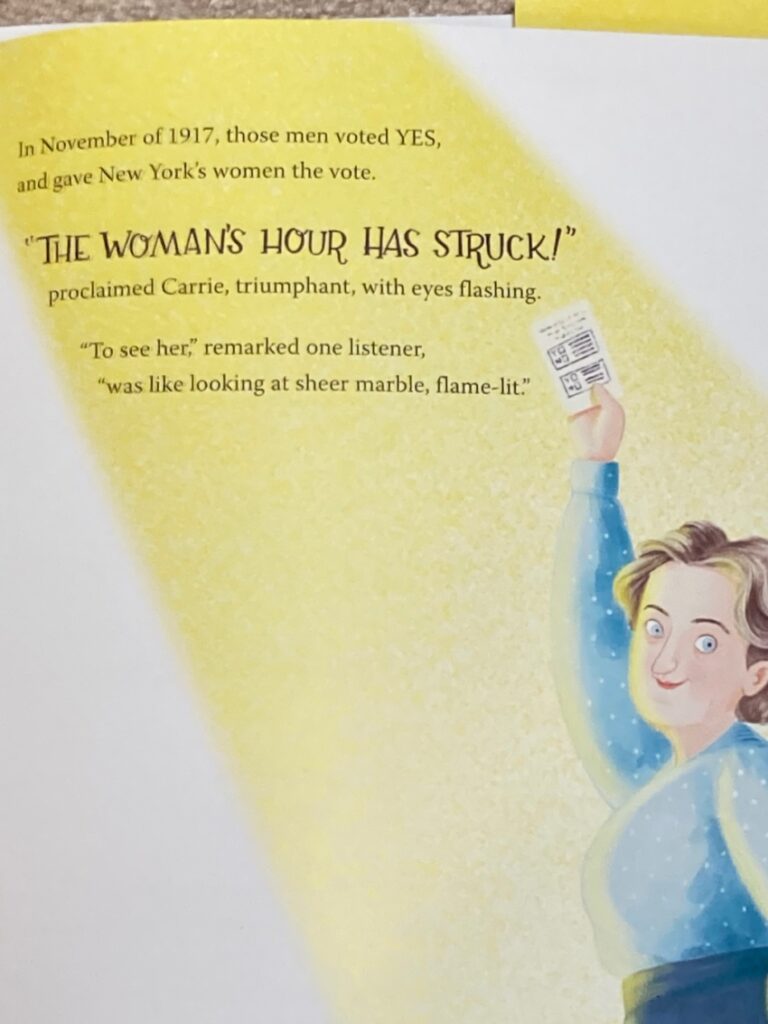
Carr knew that for the movement to gain national attraction, she had to get the masses interested, and that meant the common woman. It was also during this time that she met and fell in love with Mary Garrett Hay, and kept their relationship secret during her life. They created a “suffs” movement that involved hundreds of thousands of ladies, eventually getting women’s right to vote on the ballot in New York state in 1915. That vote did not go in their favor and they vowed to keep on trying, but something even bigger was just around the corner.
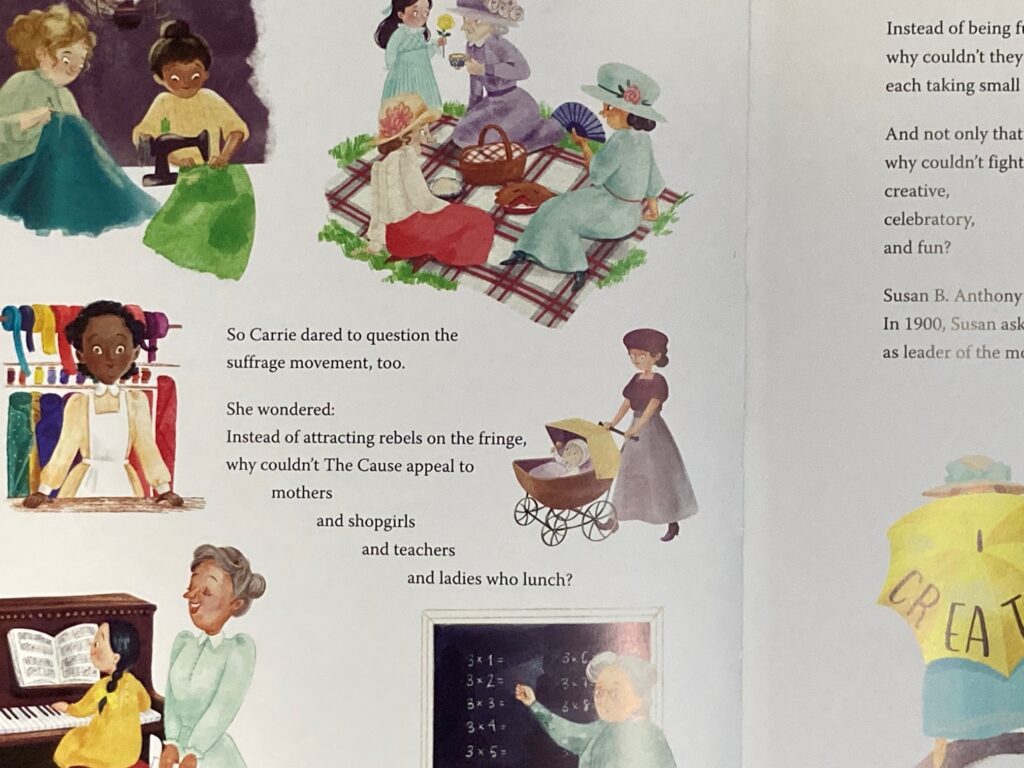
WWI came and opened up a vacuum of jobs that women previously weren’t allowed to do. President Woodrow Wilson was not a believer in their cause but was also very grateful to her for filling the job vacancies all of the men left. This paid dividends because in 1917 New York state voted in favor of allowing women to vote. That trickled forward even more with the Nineteenth Amendment being passed on June 4, 1919.
That amendment allowed women the right to vote, but in order for it to become law it had to be ratified by 36 states. The vote got to 35 and stalled, with those not voting yet either against it or wanting to see how the wind was blowing. It all came down to Tennessee in August 1920, and it was color-coded as to what they believed. Those who were against it wore red roses and the aforementioned yellow roses on those in favor of it.
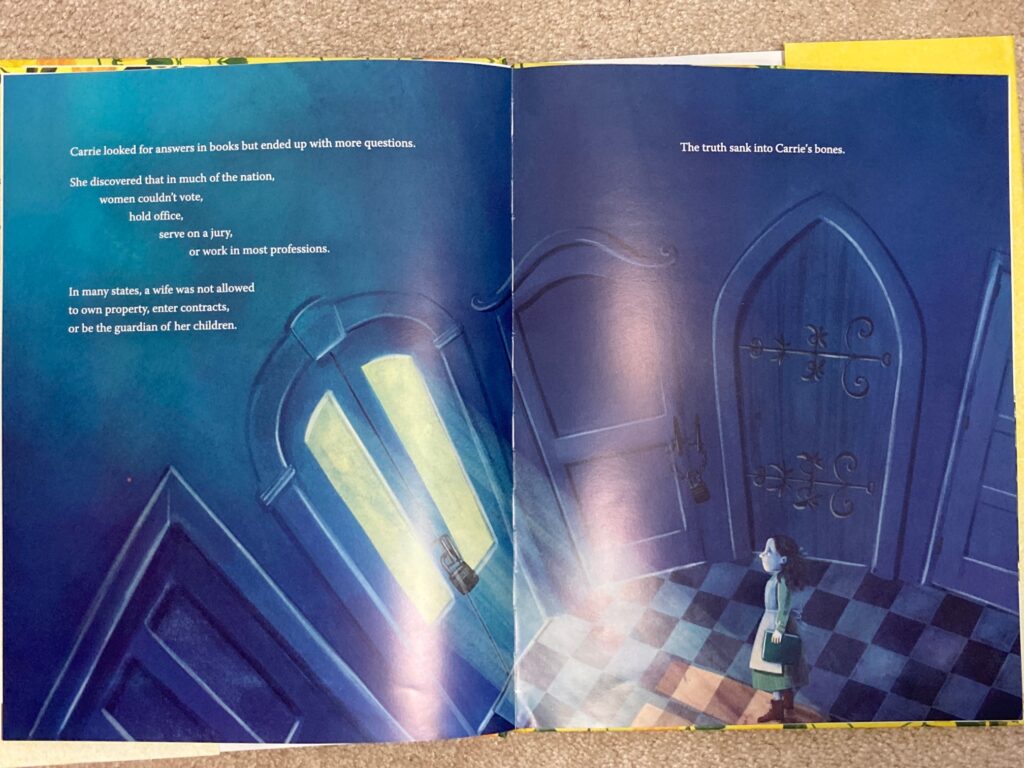
The vote went down to the wire, with one brave man, wearing a red rose, changing his vote to yes, thanks to a note from his mother who urged him to do so. Moms, am I right?
There’s a lot to like about Dare to Question for illustrated book audiences. The pages use most of the space to fill it with color, like when a young Carr is wistfully looking up in a room that’s too big for her. The text in the book is poetic in appearance, but not in its flow. There aren’t rhyming words, despite the fact that many of the sentences have an appearance that breaks them up as if they should rhyme.
But these audiences know that rhyming books are for babies, and this isn’t a baby book. This is an illustrated book that kids like to have read to them as they (hopefully) sit semi-circle in front of a patient and skilled teacher. That’s where the showmanship of a good illustrated book hopefully drives the presentation. The staccato sentences combined with the realistic illustrations will help those ages pay attention, and learn.
The lesson might be the first time that they’ve heard it. You mean women weren’t allowed to vote? That might lead to more conversations, which the artwork in the book helps reinforce or provide context. Not all conversations mind you, but it’ll let their young minds full of context clues and other questions and lessons that could be learned start to warm up. It will take about ten minutes to read the book to a class, so plan your time accordingly. However, it could also lead to at least five minutes of questions from kids that can’t fathom the time when Dare to Question took place.
Dare to Question: Carrie Chapman Carr’s Voice for the Vote is by Jasmine A. Stirling, with illustrations by Udayana Lugo and is available on Union Square Kids.
There are affiliate links in this post.

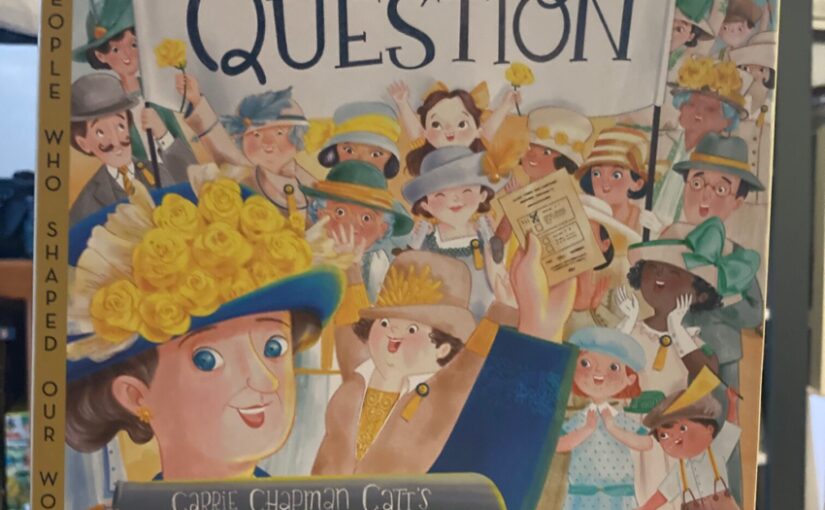
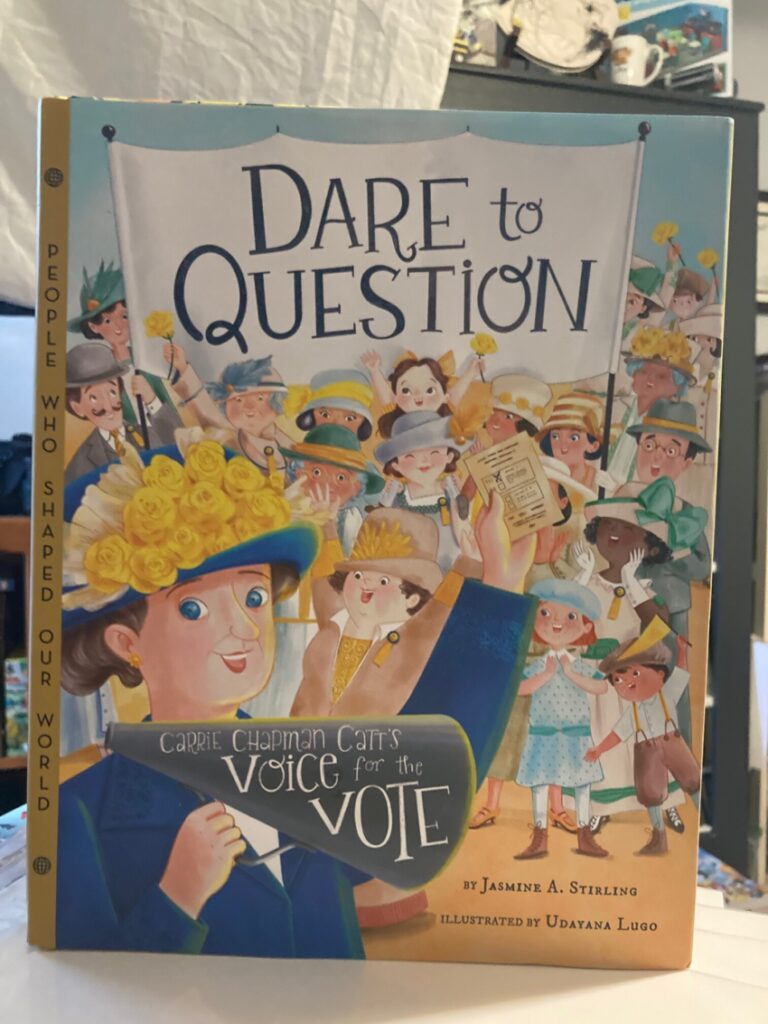


 Facebook
Facebook Twitter
Twitter Flickr
Flickr GooglePlus
GooglePlus Youtube
Youtube